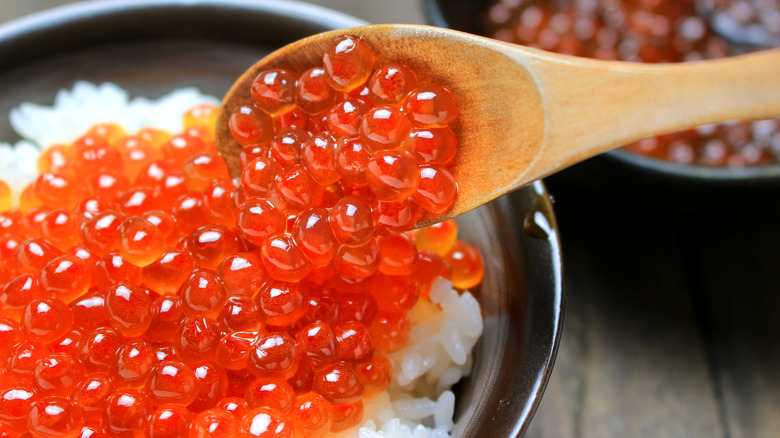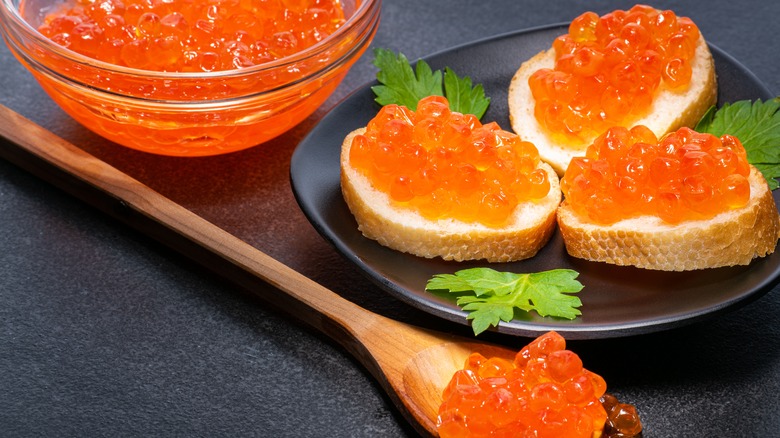What Makes Keta Salmon Eggs Such A Delicacy?
Have you ever wondered what those little glowing orange globes atop your sushi rolls are? They could be keta salmon eggs, also known as ikura in Japanese, a delicacy and delectable addition to many dishes. Keta salmon eggs are roe, a term that refers to unfertilized marine animal eggs much like black caviar, hence keta salmon's nickname as red caviar. But keta roe is unique for several reasons, making it a true delicacy that can't be replicated with any old fish egg variety.
Keta salmon eggs come from a species of salmon called Oncorhynchus Keta, which is native to the Pacific Ocean and can be found in the cold waters of Alaska all the way to northern Asia. The fish itself is very common and disparagingly called chum salmon. In Alaska, chum salmon has been commonly fed to sled dogs, but the eggs are true luxuries. They are wild-caught and then typically packaged in a light brining solution. Unlike other types of caviar, keta salmon roe isn't terribly salty, fishy, bitter, or gritty. Each orb has a creamy, sweet, and somewhat yolky flavor and a delicate protective shell that satisfyingly explodes when you bite in. This sets keta roe apart from almost any roe or caviar, making it an exceptional addition to any meal.
Tiny orbs, big flavor
This species of salmon and its eggs are pretty abundant, so they have less prestige (and a smaller price tag) than other forms of caviar, such as beluga black caviar. Still, the unique flavor, texture, color, and size make this salmon caviar (or saviar) a standout in the culinary world. So don't let the term "chum salmon" put you off this divine roe. Think of them as savory, mild, and delicate boba with endless versatility. You can pair it with a sour cream or crème fraîche-coated toast point, sprinkle a few orbs onto a half-oyster shell, or simply scoop it up with a sheet of nori (seaweed paper).
In addition to categorizing caviar and roe by species, it also receives grades for its quality. Grade A or premium red caviar ensures that the roe is the freshest possible, that none of the eggs have raptured, and that they're all relatively the same size and shape. Grades B and C are slightly less fresh, less uniform in texture, size, and shape, and some burst eggs. Grade A keta salmon roe is the finest form of this delicacy and should be used when you want to savor each morsel and enjoy them as a significant feature of a dish. Lesser grades are fine as a garnish, just not a main component.

